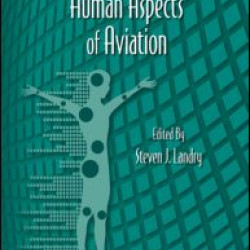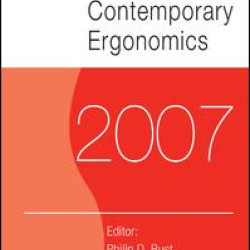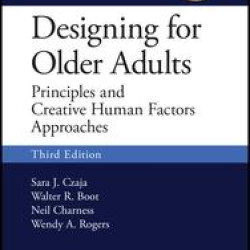Product Design
Brand: Taylor & Francis
Model: Stock
With contrbutions from experts, this book covers the design of aircrafts for the comfort and well being of the passenger. It includes strategies and guidelines for maximizing comfort, the design of aircrafts including cockpit design, and the training and work schedules for flight attendants and pilo..
₹5,140.06 ₹6,425.08
Brand: Taylor & Francis
Model: Stock
Aesthetic Sustainability offers guidelines for ways to reduce, rethink and reform consumption. Its focus on aesthetics adds a new dimension to the creation, as well as the consumption, of sustainable products. The chapters offer innovative ways of working with what the author calls expressional dura..
₹8,812.80 ₹11,016.00
Brand: Taylor & Francis
Model: Stock
This work gives an overview of the topic of usability. Firstly, usability is defined and a framework for identifing different aspects of usability is given. The main principles for creating usable designs are expounded, followed by practical advice..
₹3,671.26 ₹4,589.08
Brand: Taylor & Francis
Model: Stock
Containing the proceedings of the Ergonomics Society's annual conference 2007, with an emphasis on "Human factors at the heart of systems engineering". This work features papers that provide insight into the practice, and research findings...
₹11,016.00 ₹13,770.00
Brand: Taylor & Francis
Model: Stock
The first edition of this resource broke ground as a primer on designing for older adults. In the second edition, the authors have revised and updated each of the original chapters, rearranged some of them for a more natural flow, added a new section of tutorials, and provided updated recommended re..
₹5,140.06 ₹6,425.08
Brand: Taylor & Francis
Model: Stock
Liberally illustrated with actual design examples, this book demonstrates how people acquire and interpret information and examines the factors that undermine this process. The first edition successfully filled a significant gap in the market, presenting a core set of principles and a methodology fo..
₹4,846.30 ₹6,057.88
Brand: Taylor & Francis
Model: 9780415298872
More than ever, designers and technologists are considering human factors in the product design process. Consumers are now seen as key to the overall look and usability of products, not just passive users. Traditional thinking assumed that if a task could be accomplished with a reasonable degree of ..
₹3,818.14 ₹4,772.68
Brand: Taylor & Francis
Model: Stock
The central theme of this book is how design principles can reduce the probability of an error while driving. The authors demonstrate how knowledge of human factors helps a road authority to better understand how road users behave. They argue that in many cases the design of the environment can be f..
₹3,304.80 ₹4,131.00
Brand: Taylor & Francis
Model: Stock
Currently, the rail industry lacks a standardized approach to the human factors evaluation of new technologies in operational settings. While a number of human factors evaluation methods exist (such as task analysis, situation awareness measures, quasi-experiments), these are rarely tailored to the ..
₹9,180.00 ₹11,475.00
Brand: Taylor & Francis
Model: Stock
Currently, the rail industry lacks a standardized approach to the human factors evaluation of new technologies in operational settings. While a number of human factors evaluation methods exist (such as task analysis, situation awareness measures, quasi-experiments), these are rarely tailored to the ..
₹3,304.80 ₹4,131.00













